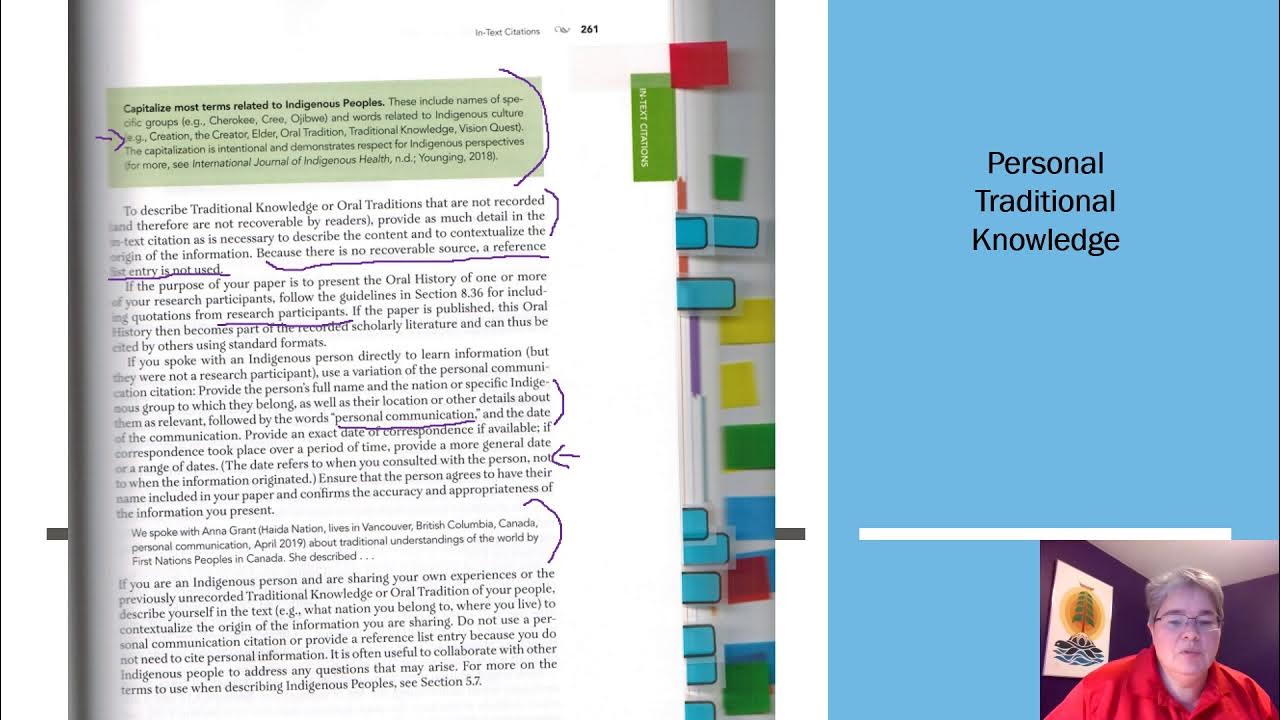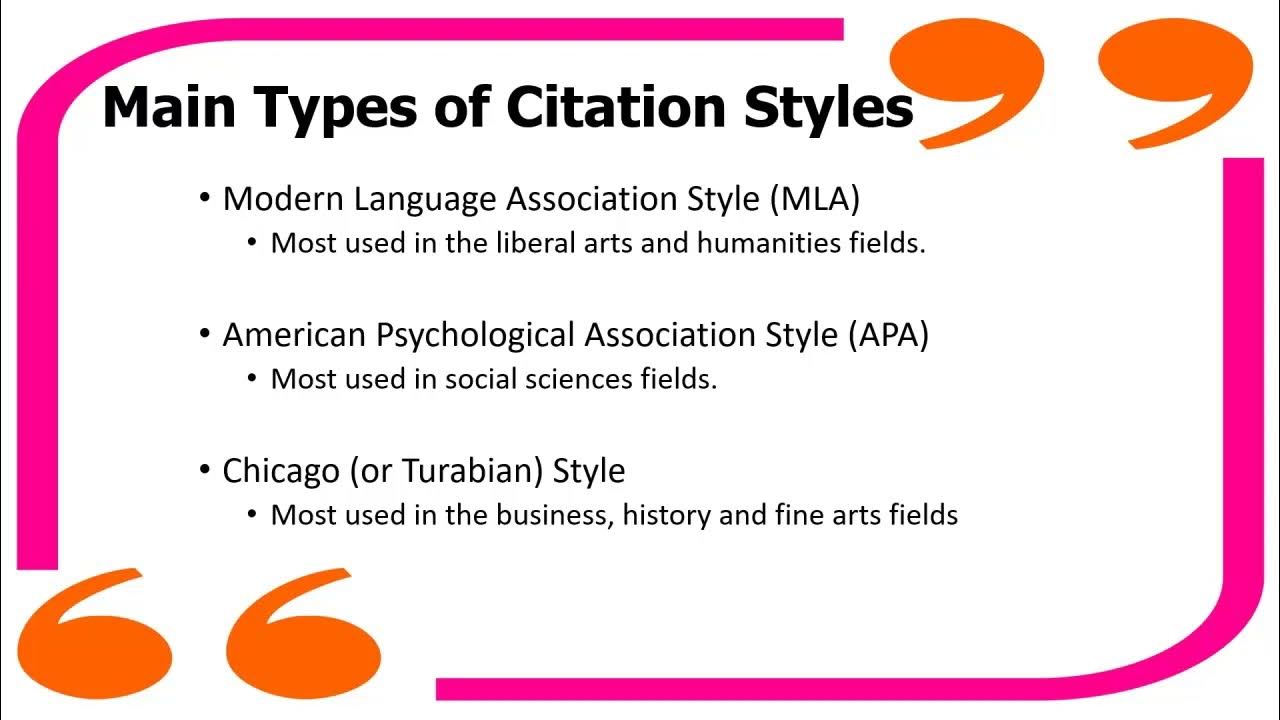Citations and Style Guides
Summary
TLDRThis video offers a basic guide to creating in-text and reference citations, essential for academic research and writing. It explains the difference between in-text citations, which include author, date, and page number, and reference citations, which provide comprehensive source information. Style guides, developed by professional organizations, dictate citation and paper formatting rules. Examples include APA, used by the American Psychological Association and others. The video suggests using online resources like Primo and citation management software to organize and verify citations, and advises consulting professors or librarians for help.
Takeaways
- 📝 In-text citations are citations within the body of a paper that include the author's name, date of publication, and page number.
- 🔖 Reference or ending citations are found at the end of a paper and contain comprehensive source information like author, title, and publishing details.
- 📚 Style guides, developed by professional organizations, provide detailed rules for writing in-text and reference citations and formatting papers.
- 🏛 APA style guide, created by the American Psychological Association, is used in various fields including libraries and is an example of a widely used style guide.
- 👨🏫 Professors may choose a citation style based on the class, personal preference, or even develop a custom style for a specific class.
- 🔍 Primo is a tool that can help locate books or articles for research and provides citation information for different styles.
- 📑 Online databases and articles often have a 'cite' button that allows users to select a citation style and copy the citation information.
- 🤖 Citation management software can assist in organizing and verifying citations, offering a tool for efficient research management.
- 🔗 Online articles may link to other databases that offer additional citation styles, expanding the options for citation formats.
- ❓ For questions about style guides, citation writing, or locating citation information, reaching out to a professor or librarian is recommended.
Q & A
What are in-text citations and where are they typically located?
-In-text citations are references that are placed within the body of a paper. They usually include the author's name, date of publication, and page number.
What is the purpose of reference or ending citations?
-Reference or ending citations are located at the end of a paper and provide all the required information about a source, including the author's name, date of publication, title, and publishing information.
Why are style guides important for writing citations?
-Style guides are important because they provide detailed rules on how to write in-text and reference citations, as well as how to format a paper, ensuring consistency and professionalism in academic writing.
Who developed the APA style guide and for what purpose?
-The APA style guide was developed by the American Psychological Association (APA) and is used for research in psychology and related fields, as well as in libraries.
Can a professor choose a citation style for a class?
-Yes, a professor may choose a citation style based on the class, their personal preference, or develop a custom style specifically for their class.
Where can one find a style guide for citation styles?
-Style guides can be found online or as physical books in libraries.
How can one locate information for building in-text or reference citations?
-One can locate information for citations by searching in databases like Primo, where books or articles can be found and citation information can be generated for different styles.
What is the role of the 'cite' button in online databases?
-The 'cite' button in online databases allows users to select their citation style and copy the citation information directly.
What is a citation manager and how does it help with citations?
-A citation manager is software that helps organize and double-check citations, making it easier to manage and format references in a paper.
Can citation information have errors, and what should one do to ensure accuracy?
-Yes, citation information can have errors. It's important to always compare the generated citations with the style guide to double-check for accuracy.
Who should one contact for help with style guides, in-text or reference citations?
-For help with style guides, in-text or reference citations, one should contact their professor or a librarian.
Outlines

このセクションは有料ユーザー限定です。 アクセスするには、アップグレードをお願いします。
今すぐアップグレードMindmap

このセクションは有料ユーザー限定です。 アクセスするには、アップグレードをお願いします。
今すぐアップグレードKeywords

このセクションは有料ユーザー限定です。 アクセスするには、アップグレードをお願いします。
今すぐアップグレードHighlights

このセクションは有料ユーザー限定です。 アクセスするには、アップグレードをお願いします。
今すぐアップグレードTranscripts

このセクションは有料ユーザー限定です。 アクセスするには、アップグレードをお願いします。
今すぐアップグレード5.0 / 5 (0 votes)






